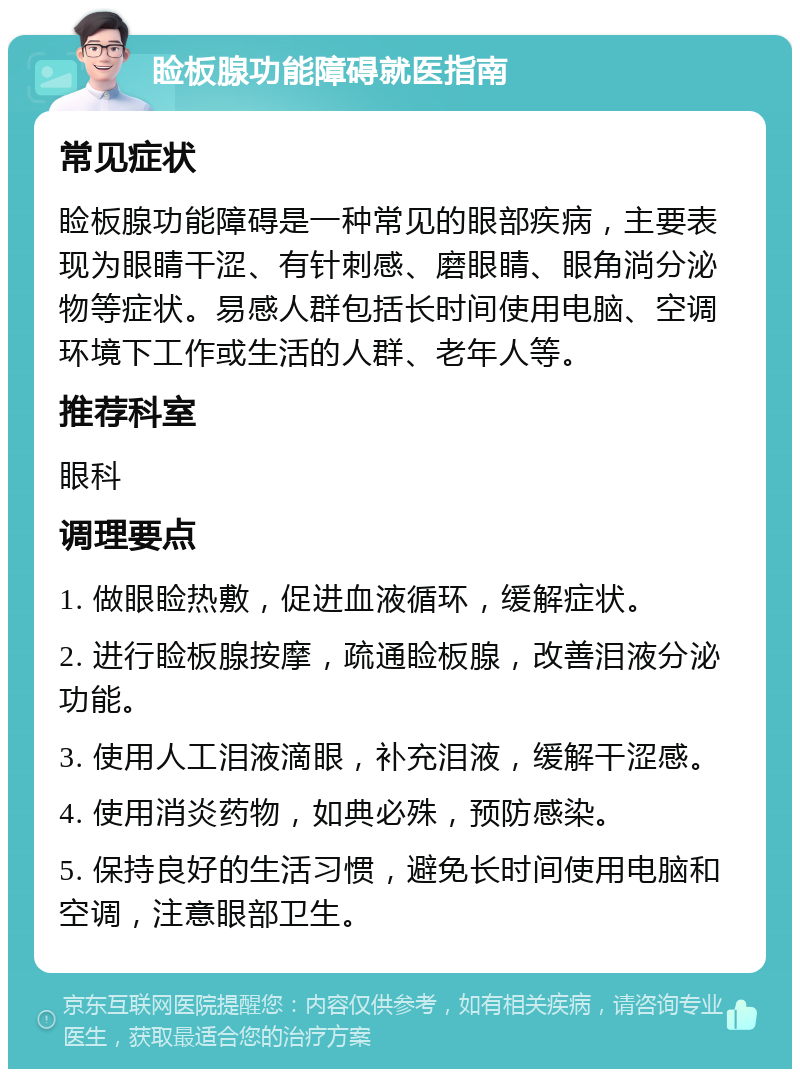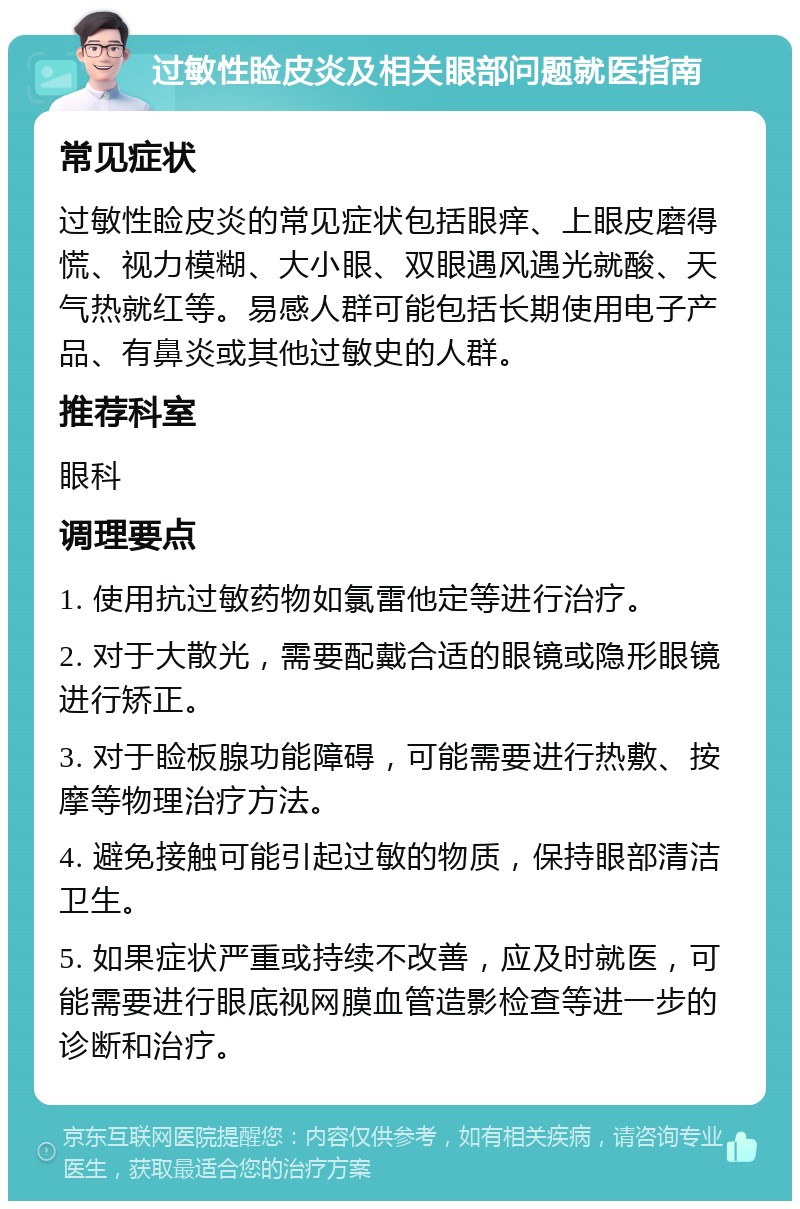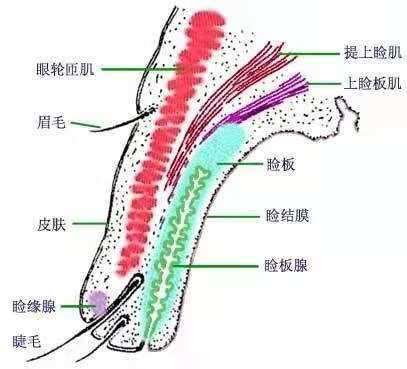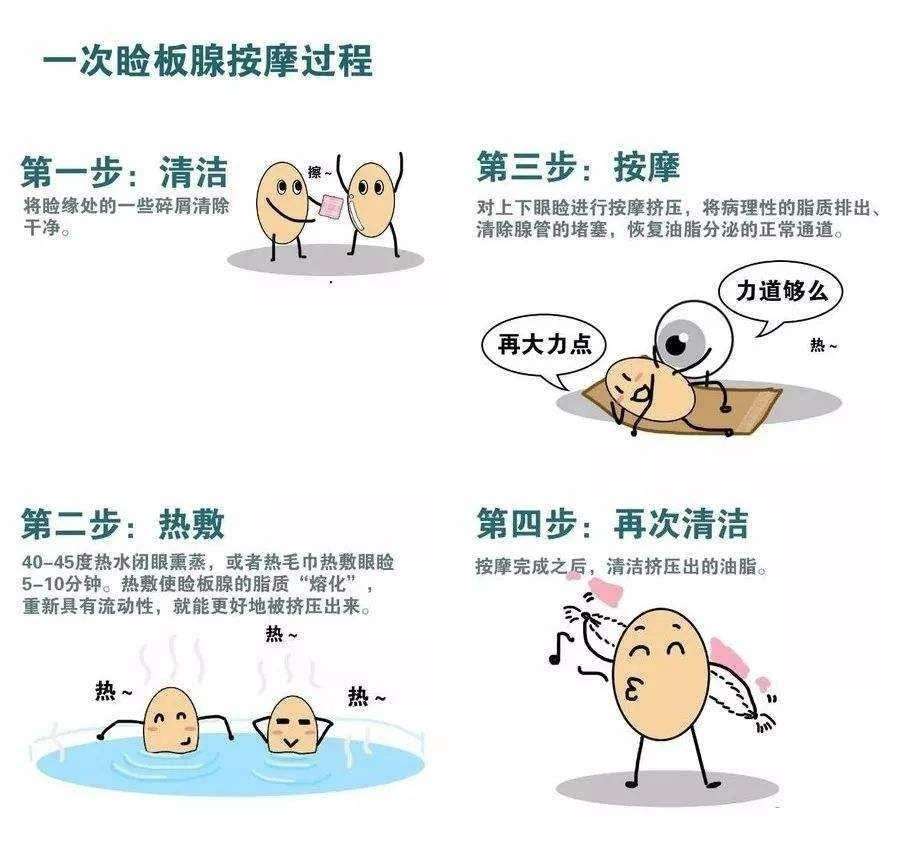文章 眼睛干涩、有针刺感、磨眼睛怎么办?

我母亲的眼睛最近总是干涩、有针刺感,磨得慌,眼角还会淌出分泌物。看着她那痛苦的表情,我心疼不已。我们一家人都很担心,于是决定带她去看医生。
我们来到了京东互联网医院,通过视频连线,医生详细询问了我母亲的症状和生活习惯。医生告诉我们,可能是睑板腺功能障碍引起的干眼,需要消炎和滴人工泪液。同时,医生还建议做眼睑热敷和睑板腺按摩来缓解症状。
我母亲有些疑惑,问医生:“这个好用么?”医生耐心解释说:“睑板腺在眼皮内,按摩可以帮助疏通睑板腺,缓解干眼症状。”
我母亲又问:“怎么按摩?”医生详细指导了按摩方法,并强调最好到医院做睑板腺按摩,效果更好。我们问医生是人工还是机器按摩,医生说是人工按摩,效果更佳。
医生还告诉我们,做睑板腺按摩可以疏通睑板腺,缓解干眼症状。一般来说,一周做一次按摩,四次为一个疗程。同时,医生也询问了我母亲是否有药物过敏和用药禁忌,确认没有后,给出了健康指导。
医生建议我母亲使用前两个药物中的一个和第三个药物一起滴,间隔十分钟不分先后,日三次滴眼。对于我母亲之前用的药,医生说可以用,但作用不直接。医生还提醒我们,典必殊一周就可以停了,另一个人工泪液可以长期滴。
整个过程中,医生非常专业和耐心,解答了我们所有的疑问。我们对京东互联网医院的服务非常满意,感谢医生的帮助和指导。现在,我母亲的症状已经有所缓解,我们也更加了解如何预防和治疗干眼症了。
如果你也有类似的症状,千万不要忽视,及时就医是非常重要的。希望大家都能关注自己的健康,保持良好的生活习惯,远离疾病的困扰。

健康百科
文章 左眼大小眼、遇风遇光酸、天气热就红,需要看医生吗?

我从小就对自己的外貌特别在意,尤其是眼睛。每次照镜子,总觉得左眼比右眼小一点,虽然别人看不出来,但我自己却总是能感觉到。直到有一天,我在拍照时无意中发现了这个问题,照片上的我,左眼明显比右眼小,简直就是大小眼!
这件事让我非常苦恼,尤其是在遇风遇光时,双眼都会感到酸涩,天气一热更是红肿不堪。这些症状让我开始怀疑自己的健康状况,于是决定去看医生。
我来到京东互联网医院,通过在线咨询与一位眼科医生进行了交流。医生问我是否有视力问题,我说最近感觉模糊,之前还好。医生又问我有没有基础病,我一脸茫然地问什么是基础病,医生解释说是高血压、糖尿病等全身性疾病。我摇了摇头,表示没有做过检查,也不知道自己有没有这些病。
医生看了我上传的几张报告,发现其中没有视力记录,眼底照片也不清楚。医生告诉我,根据检查结果,我的视网膜照相颜色不正常,存在大散光和睑板腺功能障碍,可能还伴有过敏性睑皮炎。医生建议我试镜矫正,并做眼底视网膜血管造影检查看看。
听到这些,我不禁感到一阵恐慌。为什么我会有这么多问题?我开始回想自己的生活习惯,是否有什么不良习惯导致了这些问题?我想起最近看电子产品的时间比较长,可能是这个原因吧?
医生安慰我说,很多人都有类似的问题,关键是要及时治疗,避免病情加重。我深深地感谢医生,决定按照医生的建议去做。同时,我也意识到,健康没有小事,平日里我们也要多注意身体,出现不适要及时就医,不方便的话就去京东互联网医院,真的方便!
想问问大家有没有出现这样的情况啊?如果有,希望你们也能及时就医,保护好自己的健康。

癌症防治先锋
文章 妈妈的干眼症用药不见效,怎么办?

我妈妈的干眼症已经困扰了我们一家好几个月了。每次看到她揉眼睛、流泪,我就心疼不已。我们曾经尝试了各种方法,包括用药、热敷、甚至是去寺庙求神拜佛,但都没有明显的改善。直到有一天,我在网上偶然发现了京东互联网医院,决定给妈妈试一试。
我记得那天早上,我和妈妈一起坐在电脑前,打开了京东互联网医院的网站。我们选择了眼科专家张医生进行在线咨询。刚开始,妈妈还有些担心,怕医生看不清她的眼睛,或者无法正确诊断。但是,张医生非常专业和耐心,他详细询问了妈妈的症状和用药情况,并且查看了我们上传的检查报告。他的专业知识和亲切态度让我们感到非常安心。
张医生告诉我们,妈妈的干眼症是由于睑板腺功能障碍引起的,之前用药效果不佳可能是因为药物选择不当。他推荐我们使用玻璃酸钠滴眼液,并且详细说明了用药方法和注意事项。同时,他还给我们提供了一些生活习惯的建议,例如少看手机、少熬夜,多吃一些富含维生素A的食物,如蓝莓、葡萄、胡萝卜等。
在张医生的指导下,妈妈开始了新的治疗方案。每天早晚各一次,她都会按照医嘱使用滴眼液。同时,我们也开始注意她的生活习惯,尽量让她保持良好的作息和饮食。慢慢地,妈妈的眼睛不再那么干涩和疼痛了,她的精神也变得越来越好。
我想说,京东互联网医院真的很方便和实用。通过在线咨询,我们不仅节省了时间和精力,还得到了专业的医疗建议。现在,妈妈的干眼症已经基本痊愈了,我们一家人都非常感激张医生和京东互联网医院的帮助。如果你也有类似的问题,不妨也试试看吧!


老年健康守护者
文章 睑板腺功能障碍(MGD)物理疗法
局部物理治疗:包括睑缘清洁、眼局部热敷或冷敷、眼睑按摩。
(1)睑缘清洁:可以使用稀释的婴儿洗发液或沐浴液(无泪配方),但临床更加推荐应用专业的睑缘清洁产品,一般每天1或2次,连续1个月。
(2)眼局部热敷或冷敷:常用的热敷方式包括热毛巾、热水袋、红外线设备及化学发热眼贴等,一般每次持续5~10 min,温度维持在约40℃即可。每天1或2次,连续1个月;改为隔天1次,连续1个月;对于重度患者可延长热敷疗程。热敷时注意不要挤压眼球。眼局部冷敷适用于睑缘炎较重的患者,表现为局部充血、分泌物多、睑缘红肿。常用的方法是用凉毛巾或包有冰块的毛巾冷敷眼睑,温度在10℃左右,一般持续5~10 min。待睑缘炎性反应消退后可改为热敷。
(3)眼睑按摩:可以指导患者自行按摩眼睑,每次3~5 min,每天2次,连续1个月以上。应当在热敷后进行按摩。重度患者或自行按摩效果不佳的患者,可以由医务人员在门诊进行睑板腺按摩,方法包括玻璃棒法、睑板腺垫板法、睑板镊等。需每周进行1次治疗,连续1个月以上。
对于睑缘炎处于活动阶段的患者,不建议行眼睑按摩,待炎性反应消退后再行眼睑按摩。对于萎缩性MGD患者,眼睑物理治疗效果,多不佳,难以恢复睑板腺正常分泌功能,应以局部对症药物治疗为主。
(4)使用各种眼睑按摩仪:睑板腺热脉动治疗系统可直接对眼睑进行热敷和按摩,同时还有强脉冲光系统通过治疗眼睑周围皮肤和皮脂腺,改善睑板腺的分泌功能,缓解睑板腺开口的阻塞,且治疗效果可维持半年以上。此类仪器在我国应用的经验不多,尚需进一步开展临床观察。

主治医师张清勇
文章 科学热敷眼睛!
热敷眼睛的方法!
最常见的干眼发生原因,都是因为睑板腺出现问题。睑板腺分泌不良,会造成睑板腺堵塞或萎缩,导致眼表最外面的脂质层减少从而引起干眼。
睑板腺功能障碍这几年被越来越多的认识,而热敷对很多人来说是有效的,通过增加眼周的温度,有可能改善睑板腺油脂的分泌,从而达到缓解眼睛干涩等不适的症状。
但应该怎么热敷呢?我总结了一些简单易操作的热敷方法,有需要的可以收藏:
毛巾热敷
- 用干净的毛巾,把 40-50℃左右的热水倒在毛巾上面。先用自己的手背试试温度,手背能适应不觉得烫了,才可以放在眼部进行热敷,确保不损伤眼睛。一般重复 3-5 次,大约 10-15 分钟即可。
熏蒸热敷
- 可以使用日常喝水的杯子,盛 4/5 容量的热水,可以看到蒸腾的热汽。同样,先用手背试一下温度,确定不烫了,就可以利用熏蒸对眼睛进行热敷了。
- 热敷时要闭合眼睑,每次时间不宜过长,大约 5 分钟左右。
另外,热敷虽然能缓解一些不适症状,但并不能治愈疾病。如果眼睛干涩、视疲劳问题比较严重,还是要找到眼科医生仔细诊断,除了这些适合居家自行调理的方法,医生还有更专业的治疗手段,例如按摩、IPL 激光,对某些类型的干眼症治疗效果很好,作用也更加持久。

副主任医师尚宪慧
文章 眼睛干涩怎么办?

住院医师曾沣
文章 睑板腺和眼部哪些常见的疾病有关呢?
下面左图是正常的睑板腺,右图是萎缩的睑板腺。

1.睑板腺分泌的不足会造成 干眼症 ,这是一种很常见的眼疾。
2.也可造成 睑缘炎 ,是眼睑边缘皮肤发炎的现象,会红肿充血,有鳞屑,会掉睫毛,更厉害的会造成睑缘小溃疡,它通常会影响双眼。
3.如果睑板腺开口受到阻塞我们叫睑板腺功能障碍,阻塞物可以被细菌的解脂酵素分解,因而释放脂肪酸,形成泡沫状分泌物。
4.这些脂肪酸可以刺激眼睛,有时可以造成结膜炎或角膜炎。
5.如果皮脂蠕形螨多寄居于眼睑皮肤的皮脂腺和睑板腺,患者感染蠕形螨后多表现为反复发作的睑缘红、眼痒、眼干、眼烧灼感、异物感、畏光及分泌物增多,严重者可伴有反复睫毛脱落,睑板腺开口可见脂栓,睑脂分泌物性状异常。
6.睑板腺口阻塞,细菌感染则会变成睑板腺炎,也就是我们常说的麦粒肿,俗称“偷针眼",民间传说“偷针眼"是眼孔堵塞需要疏通,其实是睑板腺口阻塞而非泪道堵塞。此孔非彼孔,泪小点上下睑各一个孔,而造成麦粒肿的睑板腺口上睑有40-50个开口,下睑大约有25个开口,任何一个口子堵塞感染都会造成,所以是麦粒肿多发的原因。
7.如果睑板腺排出管道阻塞并有分泌物潴留变成慢性肉芽肿性炎症,这就是我们说的睑板腺囊肿。
8.如果睑板腺阻塞管道内潴留物,向睑结膜面破溃,会形成结膜肉芽肿或息肉,睑结膜表面也容易形成黄白色的结膜结石。

住院医师李双君
文章 睑板腺到底是个什么东东?在眼睛中很重要吗?

睑板腺是一种在眼皮周围的特殊皮脂腺,也是人体最大的皮脂腺。睑板腺位于眼皮睑板内,与睑缘成垂直排列,并开口于睑缘。其主要的功能为分泌油脂层,用于延缓水液层的蒸发及增加泪液膜的表面张力,并可润滑眼睑及眼球的接触面。上眼皮大约有40-50条睑板腺,而下眼皮大约有25条睑板腺。人类的睑板腺大约会分泌90多种的蛋白质。

住院医师李双君
文章 拿什么来拯救我们的睑板腺呢?
其中物理治疗非常重要!!!
那就是 睑板腺按摩四步法:清洁、热敷、按摩、再清洁 。

第一步清洁:指将睑缘处的碎屑清洁干净;
第二步热敷:指用40-50摄氏度热水熏蒸或者热毛巾热敷眼睑5-10分钟。热敷使睑板腺的脂质“融化”,重新具有流动性,就能更好地被挤压出来。
第三步按摩:对上下眼睑进行按摩挤压,将病理性的脂质排出,清除腺管的堵塞,恢复油脂分泌物的正常通道。
第四步再清洁:按摩完成之后,清洁挤出的油脂。

住院医师李双君
文章 干眼 dry eye disease
眼睛干涩
眼睛干燥等,当眼泪无法稳定保持眼表充分润滑时,就会发生这种情况。
常见原因:
老花
药物
激光眼科手术
干燥空气过多
减少眨眼
长时间使用计算机
隐形眼镜的使用
女性激素变化
治疗
自我治疗:在一些不太严重的情况下可能有帮助:
使用防护眼镜阻挡干燥空气
加湿室内空气
将计算机屏幕置于视线水平以下
避免接触烟雾
使用人工泪液
通过眨眼和闭上眼睛来频繁地锻炼眼睛
富含维生素A食物和不饱和脂肪酸适当补充(肝脏,胡萝卜和西兰花)欧米伽脂肪酸-3, EPA, DHA
如果您发现以下情况,请去看医生:
眼睛发红
眼睛疼痛
阅读困难
如果您发现以下情况,请立即就医:
视力丧失
视力
感染的迹象,如发烧,炎症,液体排出
可用于确定干眼症原因的测试和程序包括:1.全面的眼科检查。眼科检查包括您的整体健康状况和眼睛健康的完整病史,可以帮助您的医生诊断您眼睛干涩的原因;特别是角膜荧光素染色下的泪液破裂时间检查(BUT检查,角膜荧光素是否染色阳性);2.测量眼泪量的测试。您的医生可能会使用Schirmer试验来测量您的泪液产生。结膜印迹细胞试验...3.泪液渗透压检查 4.睑板腺相关检查:分布,开头透明度,堵塞等检查和评估等
Diagnosis
Tests and procedures that may be used to determine the
cause of your dry eyes include:
A comprehensive eye exam. An eye exam that includes a complete
history of your overall health and your eye health can help your
doctor diagnose the cause of your dry eyes.
A test to measure the
volume of your tears. Your doctor may measure your tear production
using the Schirmer test. In this test, blotting strips of paper are
placed under your lower eyelids. After five minutes your doctor
measures the amount of strip soaked by your tears.
Another option for measuring tear volume is the phenol red
thread test. In this test, a thread filled with pH-sensitive dye
(tears change the dye color) is placed over the lower eyelid, wetted
with tears for 15 seconds and then measured for tear volume.
A
test to determine the quality of your tears. Other tests use special
dyes in eyedrops to determine the surface condition of your eyes. Your
doctor looks for staining patterns on the corneas and measures how
long it takes before your tears evaporate.
A tear osmolarity
test. This type of test measures the composition of particles and
water in your tears. With dry eye disease, there will be less water in
your eyes.
Tear samples to look for markers of dry eye disease,
including elevated matrix metallo proteinase-9 or decreased
lactoferrin.
More Information
Eye exam
Treatment
Punctal plugsOpen pop-up dialog box
For
most people with occasional or mild dry eye symptoms, it's enough to
regularly use over-the-counter eyedrops (artificial tears). If your
symptoms are persistent and more serious, you have other options. What
you do depends on what's causing your dry eyes.
Some treatments focus on reversing or managing a condition or factor that's causing your dry eyes. Other treatments can improve your tear quality or stop your tears from quickly draining away from your eyes.
Treating the underlying cause of dry eyes
In some cases,
treating an underlying health issue can help clear up the signs and
symptoms of dry eyes. For instance, if a medication is causing your
dry eyes, your doctor may recommend a different medication that
doesn't cause that side effect.
If you have an eyelid condition, such as your lids turned outwards (ectropion), your doctor may refer you to an eye surgeon who specializes in plastic surgery of the eyelids (oculoplastic surgeon).
Medications
Prescription medications used to treat dry eyes include:
Drugs to reduce eyelid inflammation. Inflammation along the edge of
your eyelids can keep oil glands from secreting oil into your tears.
Your doctor may recommend antibiotics to reduce inflammation.
Antibiotics for dry eyes are usually taken by mouth, though some are
used as eyedrops or ointments.
Eyedrops to control cornea
inflammation. Inflammation on the surface of your eyes (cornea) may be
controlled with prescription eyedrops that contain the
immune-suppressing medication cyclosporine (Restasis) or
corticosteroids. Corticosteroids are not ideal for long-term use due
to possible side effects.
Eye inserts that work like artificial
tears. If you have moderate to severe dry eye symptoms and artificial
tears don't help, another option may be a tiny eye insert that looks
like a clear grain of rice. Once a day, you place the hydroxypropyl
cellulose (Lacrisert) insert between your lower eyelid and your
eyeball. The insert dissolves slowly, releasing a substance that's
used in eyedrops to lubricate your eye.
Tear-stimulating drugs.
Drugs called cholinergics (pilocarpine, cevimeline) help increase tear
production. These drugs are available as pills, gel or eyedrops.
Possible side effects include sweating.
Eyedrops made from your
own blood. These are called autologous blood serum drops. They may be
an option if you have severe dry eye symptoms that don't respond to
any other treatment. To make these eyedrops, a sample of your blood is
processed to remove the red blood cells and then mixed with a salt
solution.
Other procedures
Other procedures that may be used
to treat dry eyes include:
Closing your tear ducts to reduce tear loss. Your doctor may suggest this treatment to keep your tears from leaving your eye too quickly. This can be done by partially or completely closing your tear ducts, which normally serve to drain tears away.
Tear ducts can be plugged with tiny silicone plugs (punctal plugs).
These are removable. Or tear ducts can be plugged with a procedure
that uses heat. This is a more permanent solution called thermal
cautery.泪点塞
Using special contact lenses. Ask your doctor about
newer contact lenses designed to help people with dry eyes.
Some people with severe dry eyes may opt for special contact lenses that protect the surface of the eyes and trap moisture. These are called scleral lenses or bandage lenses.巩膜镜或绑带镜
Unblocking oil glands. Warm compresses or eye masks used daily can
help clear up blocked oil glands. A thermal pulsation device is
another way to unclog the oil glands, but it is unclear whether this
method provides any advantage over warm compresses.
Using light
therapy and eyelid massage. A technique called intense-pulsed light
therapy followed by massage of the eyelids has proved to help people
with severe dry eyes.
Lifestyle and home remedies
You may be able to manage your
dry eyes with frequent eyelid washing and use of over-the-counter
(OTC) eyedrops or other products that help lubricate your eyes. If
your condition is long term (chronic), use eyedrops even when your
eyes feel fine to keep them well lubricated.
Selecting and using OTC products for dry eyes
A variety of
nonprescription products for dry eyes are available, including
eyedrops (artificial tears), gels and ointments. Talk with your doctor
about which might be best for you.
Artificial tears may be all you need to control mild dry eye symptoms. Some people need to put drops in several times a day, and some use them only once a day.
Consider these factors when selecting an OTC product:
Preservative vs. nonpreservative drops. Preservatives are added to some eyedrops to prolong shelf life. You can use eyedrops with preservatives up to four times a day. But using the preservative drops more often can cause eye irritation.
Nonpreservative eyedrops come in packages that contain multiple
single-use vials. After you use a vial, you throw it away. If you rely
on eyedrops more than four times a day, nonpreservative drops are
safe.
Drops vs. ointments. Lubricating eye ointments coat your
eyes, providing longer lasting relief from dry eyes. But these
products are thicker than eyedrops and can cloud your vision. For this
reason, ointments are best used just before bedtime. Eyedrops can be
used at any time and won't interfere with your vision.
Drops that
reduce redness. It's best to avoid these as your solution for dry
eyes, as prolonged use can cause irritation.
Washing your eyelids
to control inflammation
For people with blepharitis and other
conditions that cause eyelid inflammation that blocks the flow of oil
to the eye, frequent and gentle eyelid washing may help. To wash your eyelids:
Apply a warm washcloth to your eyes热敷. Wet a clean cloth with warm
water. Hold the cloth over your eyes for five minutes. Rewet the cloth
with warm water when it cools. Gently rub the washcloth over your
eyelids — including the base of the eyelashes — to loosen any
debris.
Use a mild soap on your eyelids温和的肥皂. Use baby shampoo or
another mild soap. Put the cleanser on your clean fingertips and
gently massage your closed eyes near the base of your eyelashes. Rinse
completely.
More Information
Artificial tears人工泪液选择: How to
select eyedrops for dry eyes
Alternative
medicine替代治疗
Further study is needed, but some alternative
medicine approaches may help relieve your dry eye symptoms. Discuss
the benefits and risks with your doctor.
Fatty acids. omega-3脂肪酸口服Adding omega-3 fatty acids to your diet may
help relieve dry eye signs and symptoms. These are available as
supplements and in foods such as flaxseed, salmon and
sardines.
Castor oil eyedrops蓖麻油滴眼液. These eyedrops may improve
symptoms by reducing tear evaporation.
Acupuncture针灸. Some people
have seen their dry eye symptoms improve after acupuncture
therapy.
Preparing for your appointment
You're likely to
start by seeing your family doctor. He or she may then refer you to an
eye specialist (ophthalmologist). Because appointments can be brief,
it's a good idea to be well prepared for your appointment.
What you can do
List any symptoms you're experiencing, including
any that may seem unrelated to the reason for which you scheduled the
appointment.
List key personal information, including any recent
life changes.
Make a list of all medications, vitamins and
supplements that you're taking.
List questions to ask your
doctor.
For dry eyes, some basic questions to ask your doctor include:
What's the most likely cause of my dry eyes?
Do I need any
tests?
Can dry eyes get better on their own?
What are my
treatment options?
What are the potential side effects of each
treatment?
I have other health conditions. How can I best manage
these conditions together?
Is a generic drug available for the
medicine you're prescribing me?
Do you have any brochures or
other printed material that I can take with me?
What websites do
you recommend?
Do I need to plan for a follow-up
visit?
Don't hesitate to ask additional questions that may occur
to you during your appointment.
What to expect from your doctor
Your doctor may ask:
Can you describe your symptoms?
Do you recall when you first
began experiencing symptoms?
Have your symptoms been continuous
or occasional?
Do other members of your family have dry
eyes?
Have you tried over-the-counter eyedrops? Did they provide
relief?
Are your symptoms worse in the morning or late in the
day?
What medications do you take?
Have you had any
radiation to the head or neck?
What you can do in the
meantime
To relieve your signs and symptoms while you wait for
your appointment, try over-the-counter eyedrops. Look for lubricating
eyedrops (artificial tears) and avoid those that advocate reducing
redness in the eyes. Eyedrops that reduce eye redness can cause
additional eye irritation.
Sept. 24, 2020
Book: Mayo Clinic Guide to Better Vision

主治医师裘凯凯

梁发雅
主任医师
耳鼻咽喉科
中山大学孙逸仙纪念医院

李赟
主任医师
小儿耳鼻咽喉科
湖南省儿童医院

党华
副主任医师
耳鼻咽喉科




